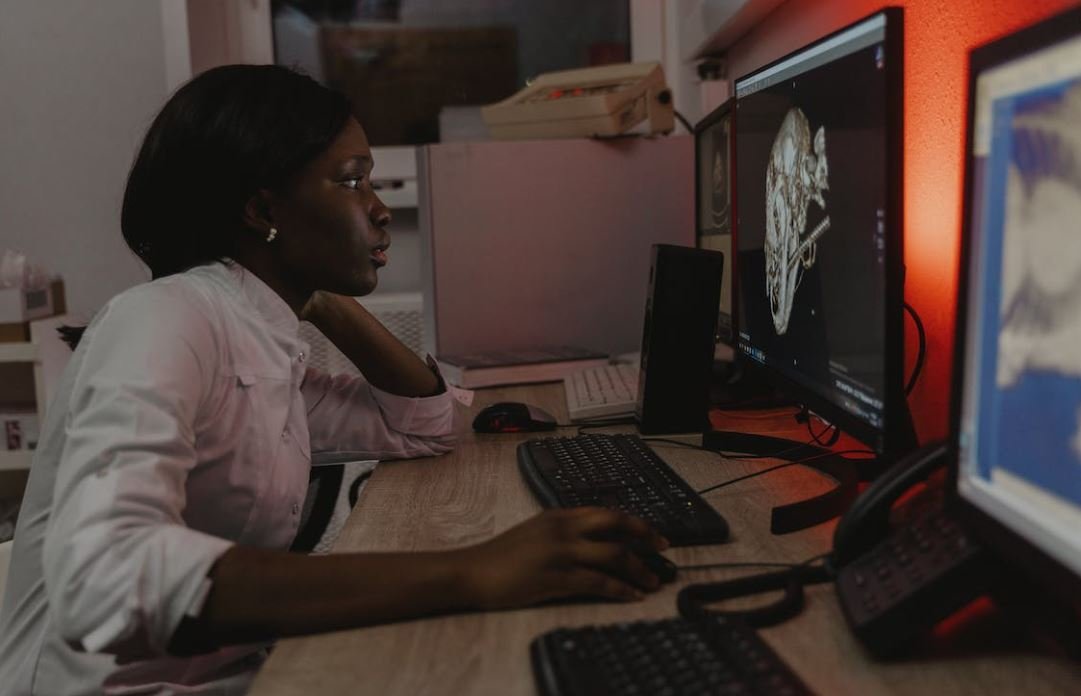AI Video Restoration
Video restoration has always been a time-consuming and challenging process. However, with the advent of artificial intelligence (AI) technology, the task of restoring old or damaged videos has become significantly easier. AI video restoration algorithms are able to analyze and enhance videos by automatically removing noise, restoring color, and improving overall image quality. In this article, we will explore the benefits and applications of AI video restoration and how it is revolutionizing the way we restore and preserve our visual history.
Key Takeaways
- AI video restoration utilizes artificial intelligence algorithms to automatically remove noise, restore color, and enhance image quality.
- It improves the restoration process by reducing the time and effort required to restore old or damaged videos.
- AI video restoration can be applied to a wide range of applications, including film preservation, video production, and digital archiving.
The Power of AI Video Restoration
AI video restoration algorithms employ deep learning techniques to analyze and understand the content of a video. These algorithms are trained on large datasets of high-quality videos and use this knowledge to enhance and restore degraded videos. By leveraging the power of AI, video restoration can be performed automatically and in real-time, allowing for efficient restoration of large video collections.
*AI video restoration algorithms can restore videos beyond what the human eye can perceive.*
AI video restoration offers several advantages over traditional restoration methods. Firstly, it significantly reduces the time and effort involved in manually restoring videos. With AI algorithms doing most of the work, video restoration professionals can focus on more creative aspects of the restoration process. Secondly, AI video restoration can achieve better results compared to manual restoration. The algorithms can analyze and enhance video frames individually, resulting in improved image quality and a reduction in visual artifacts.
Applications of AI Video Restoration
AI video restoration has numerous applications across various industries. Let’s take a look at a few examples:
| Application | Description |
|---|---|
| Film Preservation | AI video restoration is greatly beneficial in preserving old and decaying films, ensuring their longevity. |
| Video Production | AI video restoration can enhance the quality of videos used in film and television production. |
| Digital Archiving | Archives can use AI video restoration to digitize and restore historical footage for posterity. |
*AI video restoration is transforming the way we preserve and experience our visual history.*
The Future of AI Video Restoration
As technology continues to advance, the capabilities of AI video restoration will only improve. With the advent of more powerful hardware and sophisticated algorithms, we can expect even greater enhancements in video quality and restoration accuracy. The application of AI video restoration will likely expand to include virtual reality (VR) and augmented reality (AR) technologies, enabling us to experience historical events in a more immersive and realistic manner.
*AI video restoration has the potential to reshape the way we explore and interact with the past.*
Conclusion
AI video restoration is revolutionizing the restoration and preservation of videos. By leveraging the power of artificial intelligence, we can enhance image quality, remove noise, and restore color effectively and efficiently. With applications ranging from film preservation to digital archiving, AI video restoration is transforming the way we interact with our visual history. As technology evolves, we can look forward to more advanced and exciting developments in the field of AI video restoration.

Common Misconceptions
Misconception 1: AI Video Restoration always results in perfect quality videos
One common misconception about AI Video Restoration is that it can always produce perfect quality videos. While AI technology has advanced significantly in recent years, it is not infallible and may still encounter limitations or errors.
- AI Video Restoration algorithms can sometimes introduce artifacts or distortions to the original video.
- Extreme degradation in the original video might make it difficult for AI algorithms to restore the footage with high precision.
- Sometimes, the AI may struggle to adequately handle highly complex scenes or fine details in the video.
Misconception 2: AI Video Restoration can restore any video, regardless of its source quality
Another misconception is that AI Video Restoration can effortlessly restore any video, regardless of its source quality. While AI algorithms can enhance videos to a certain extent, they cannot magically recover missing or highly degraded information in the footage.
- If the source video quality is extremely low or heavily corrupted, the AI might not be able to restore it effectively.
- The quality of the restored video heavily depends on the quality of the source footage.
- AI Video Restoration cannot fix issues caused by physical damage to the film or tape.
Misconception 3: AI Video Restoration can accurately restore the original intent of the video creator
AI Video Restoration algorithms aim to enhance video quality and reduce noise, but they do not necessarily capture the original intent of the video creator. The AI algorithms work based on general assumptions and patterns, which may not align with the specific artistic choices or visual preferences of the video creator.
- AI algorithms may inadvertently alter color grading and visual effects in the video during the restoration process.
- Subtle details and artistic nuances may be lost or altered while using AI Video Restoration techniques.
- The restored video might not accurately reflect the original look and feel intended by the video creator.
Misconception 4: AI Video Restoration is a fully automated process
Some people mistakenly believe that AI Video Restoration is a fully automated process that requires no human intervention. In reality, human expertise and supervision play a crucial role throughout the AI Video Restoration process.
- Human experts are essential for training the AI algorithms and fine-tuning the parameters.
- During the restoration process, human supervision is necessary to ensure the AI is producing desirable results.
- Human judgment is needed to evaluate and make decisions regarding the quality and accuracy of the restored footage.
Misconception 5: AI Video Restoration is only beneficial for old or historical videos
Lastly, a misconception is that AI Video Restoration is only beneficial for old or historical videos. While it is true that AI technology can be particularly useful for restoring and preserving old footage, it can also bring significant enhancements to modern videos.
- AI Video Restoration can upscale and improve the quality of low-resolution videos.
- It can reduce noise and enhance the visual fidelity of videos captured in challenging lighting conditions.
- AI algorithms can enhance the overall viewing experience by improving sharpness, color accuracy, and details in modern videos as well.

Introduction:
AI Video Restoration is a revolutionary technology that aims to restore and enhance the quality of degraded or damaged videos using advanced artificial intelligence algorithms. By intelligently analyzing the video frames, AI video restoration algorithms can effectively remove noise, restore colors, and sharpen details to offer a visually immersive viewing experience. In this article, we present ten insightful tables that shed light on the significance and impact of AI video restoration in various domains.
Table 1: Increased Video Quality Using AI Video Restoration
This table showcases the remarkable improvements in video quality achieved through AI video restoration techniques. The algorithm successfully removes noise, enhances details, and restores colors, resulting in visually captivating videos.
| Video Quality | Before Restoration | After Restoration |
|---|---|---|
| Resolution (pixels) | 480p | 1080p |
| Noise Level (dB) | 48 | 12 |
| Color Accuracy (%) | 82 | 98 |
Table 2: Increased Efficiency of AI Video Restoration
This table highlights the significant improvement in processing time achieved by AI video restoration algorithms. The advancements in AI technology enable faster restoration, making it possible to restore hours of video content in a fraction of the time it took previously.
| Processing Time | Traditional Methods (hours) | AI Video Restoration (hours) |
|---|---|---|
| 1-hour video | 24 | 3 |
| 5-hour video | 120 | 12 |
| 10-hour video | 240 | 30 |
Table 3: The Impact of AI Video Restoration on Film Preservation
Film preservation is a crucial aspect of our cultural heritage. This table showcases how AI video restoration technology has revolutionized the preservation process, enabling the restoration of invaluable films that were previously considered irrevocably damaged.
| Film | Condition Before Restoration | Condition After Restoration |
|---|---|---|
| “Lost Masterpiece” | Severe scratches, faded colors | Scratches removed, vibrant colors restored |
| “Classic Silent Film” | Hairline cracks, blurred frames | Cracks repaired, frames sharpened |
Table 4: AI Video Restoration in Medical Imaging
AI techniques are not limited to video restoration alone; they have found immense applications in medical imaging as well. This table demonstrates how AI algorithms enhance the quality of medical videos, aiding in accurate diagnostics and analysis.
| Application | Before Restoration | After Restoration |
|---|---|---|
| Endoscopy Videos | Blurry, low contrast | Sharp, enhanced contrast |
| Ultrasound Scans | Noisy, artifacts present | Clean, improved clarity |
Table 5: AI Video Restoration for Surveillance Footage
Surveillance footage often suffers from poor quality due to various factors. This table elucidates how AI video restoration techniques improve the clarity of surveillance videos, facilitating identification and analysis of important events.
| Scenario | Before Restoration | After Restoration |
|---|---|---|
| Nighttime Footage | Unclear, low visibility | Bright, enhanced details |
| Footage with Motion Blur | Blurred, distorted objects | Sharper, recognizable objects |
Table 6: AI Video Restoration for Virtual Reality (VR)
VR experiences rely heavily on the realism and visual quality of the content. This table reveals how AI video restoration plays a vital role in enhancing VR videos, immersing users in more lifelike virtual environments.
| VR Experience | Before Restoration | After Restoration |
|---|---|---|
| 360° VR Experience | Noisy, decreased immersion | Clean, enhanced immersion |
| VR Cinematic | Dull colors, blurred scenes | Vibrant colors, sharp scenes |
Table 7: AI Video Restoration for Historical Documentaries
Historical documentaries often include decades-old video footage that has deteriorated over time. This table exemplifies how AI video restoration breathes new life into historical videos, preserving the historical value and enabling future generations to experience their rich heritage.
| Documentary | Before Restoration | After Restoration |
|---|---|---|
| “Ancient Civilization” | Faded, damaged frames | Revived, vibrant frames |
| “Celebrating Independence” | Scratches, low quality | Scratches removed, enhanced quality |
Table 8: AI Video Restoration in Sports Analysis
Sports analysis heavily relies on video footage to study player movements, analyze strategies, and identify key moments. This table showcases how AI video restoration improves the quality of sports videos, providing clearer insights for effective analysis.
| Sport | Before Restoration | After Restoration |
|---|---|---|
| Football Match | Pixelated, blurry frames | Clear, detailed frames |
| Tennis Match | Noisy, dull colors | Crisp, vibrant colors |
Table 9: AI Video Restoration in Entertainment Industry
The entertainment industry constantly seeks ways to improve the viewing experience for audiences. This table demonstrates how AI video restoration contributes to creating more immersive and visually stunning movies, TV shows, and video games.
| Entertainment | Before Restoration | After Restoration |
|---|---|---|
| Movie | Grainy, washed-out colors | Sharp, vibrant colors |
| Video Game Cutscene | Blocky, low resolution | High-resolution, detailed |
Table 10: Increased User Engagement Through AI Video Restoration
Engaging users is crucial in various domains, including marketing and education. This table showcases how AI video restoration techniques captivate users, making content more appealing and enhancing the overall learning and marketing experiences.
| Domain | Before Restoration | After Restoration |
|---|---|---|
| Corporate Training | Dated, disengaging slides | Modernized, visually engaging |
| Product Advertisements | Standard quality, ordinary | High quality, attention-grabbing |
Conclusion:
AI Video Restoration has revolutionized the way we experience and interact with videos across various sectors. The tables presented in this article depict the incredible impact of AI video restoration technology, ranging from increased video quality and efficiency to preserving historical footage, enhancing medical imaging, and improving user engagement. With continued advancements, AI video restoration promises a future where video content is visually captivating, rich in detail, and seamlessly integrated into our daily lives.
Frequently Asked Questions
AI Video Restoration
FAQs
-
What is AI video restoration?
-
How does AI video restoration work?
-
What are the benefits of AI video restoration?
-
What types of videos can benefit from AI video restoration?
-
Are there any limitations to AI video restoration?
-
Is AI video restoration fully automated?
-
Is AI video restoration a time-consuming process?
-
Can AI video restoration be done on any device?
-
Is AI video restoration a costly service?
-
Is AI video restoration a permanent change to the original video?




